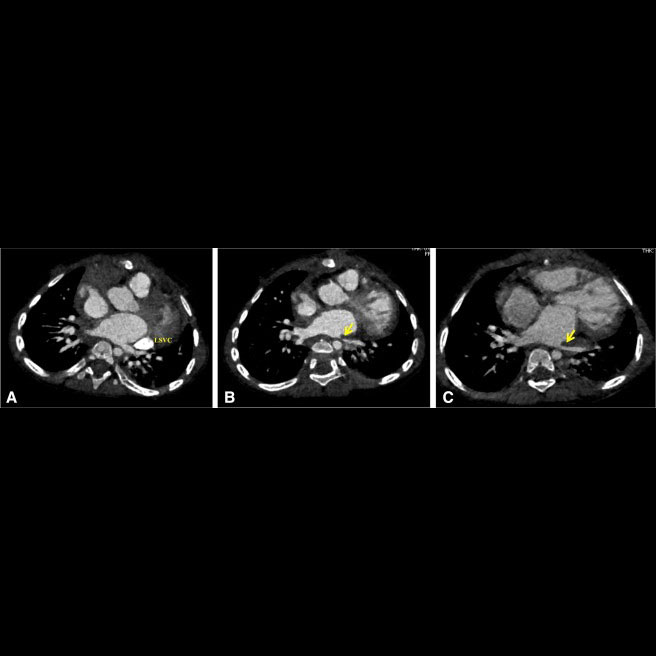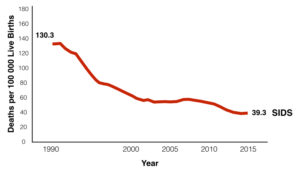Pulmonary vein stenosis, particularly affecting the left lower pulmonary vein is sometimes seen following cardiac surgery. The exact mechanism is unknown but enlargement of the heart and rotation of the heart to the left can cause compression on the left lower pulmonary vein at its entrance in the left atrium. Anterolateral displacement of the descending aorta has also been invocated as contributing to the stenosis.
A recent case was reported where a child with complete atrioventricular septal defect (AVSD) developed left lower pulmonary stenosis with secondary pulmonary arterial hypertension (image on the left) following cardiac surgery. The authors described the use of an aortopexy (a technique used to move the ascending aorta anteriorly and fix it further away from the heart and the airways) to relieve pulmonary vein stenosis. The operation seemed to be successful as the pulmonary vein appeared to be larger on repeat chest computed tomography imaging (image on the right) and the pulmonary arterial pressure had decreased at 2 years from surgery. This report is interesting and the operation deserves further consideration in children with pulmonary vein stenosis/obstruction due to anatomic compression of the vein between the anteriorly located ascending aorta and the enlarged heart, particularly as the procedure is much less invasive than direct intervention on the pulmonary vein.





